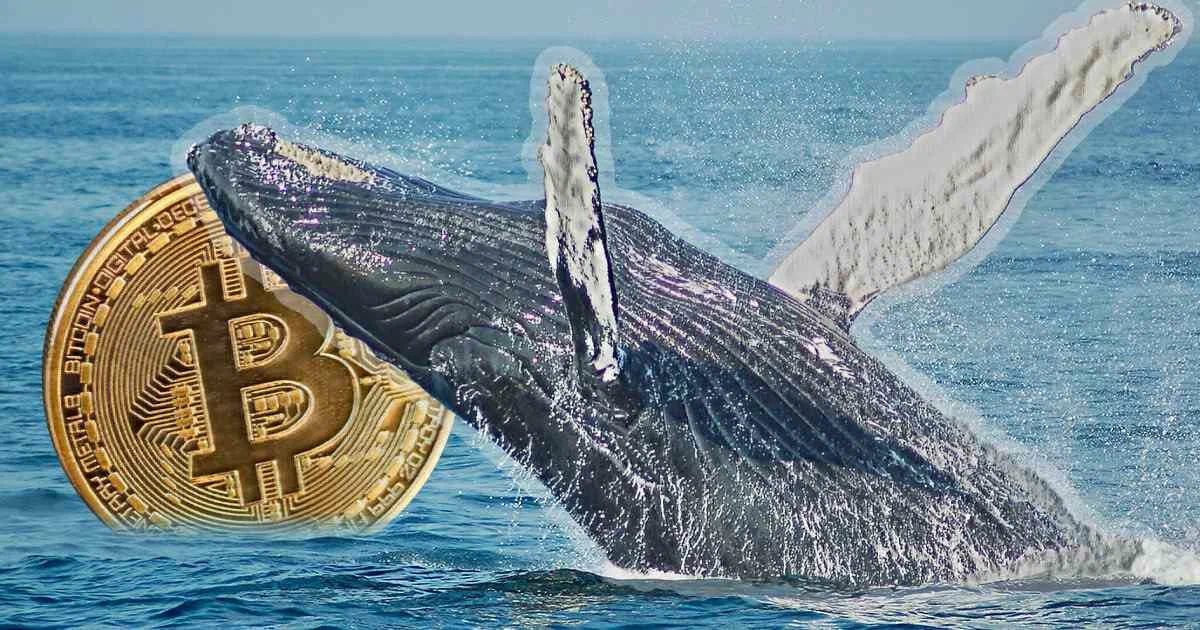The biggest bitcoin has changed significantly. From a niche digital asset, it now leads the worldwide crypto market. Bitcoin seems ready for another 25-year bull run, as indicated by the inflow of whale exchanges reaching five-year highs. This post will discuss whale exchange inflows and why they matter, as well as how their increase will impact the price of Bitcoin in the next months.
What is Whale Exchange Inflow?
Definitions of whale exchange inflows help us understand their importance. According to Bitcoin, “whales” are large cryptocurrency holders. Whales control some of Bitcoin’s supply, so their market movements affect sentiment and price. Whale exchange inflow is the number of huge Bitcoin players moving to markets. Whales sometimes change tactics after transferring Bitcoin to exchanges. Preparing to sell assets, starting new trades, or responding to market events can inspire these actions. Whale exchange inflows can reveal market mood and predict price swings. As of 2025, whale exchange inflow is almost at its highest level in five years, indicating that Bitcoin market giants are becoming more active. This inflow surge may affect Bitcoin prices and market dynamics.

Institutional Adoption Boosts Whale Inflows
Since institutional investors have embraced Bitcoin in recent years, its legitimacy as an asset class has grown. Many investment money have been bought Bitcoin by Tesla, MicroStrategy, and Square as well as by other companies. In an erratic market, institutional support has given Bitcoin legitimacy and stability. As Bitcoin ages and becomes popular, institutional investors could trade it more. Whale exchange inflows are growing. Usually using exchanges to control their holdings and gain from temporary price fluctuations, these investor’s Whale activity could point to their getting ready for a market-wide price explosion.
Upcoming Bitcoin Halving Event
Events involving the halving of Bitcoin have historically been major triggers for price rises. These events limit the rate of new Bitcoins generated and lower the reward for Bitcoin miners; they happen almost every four years. Expected to occur in 2024 or early 2025, the forthcoming halving event could be causing the higher whale inflows. Because fewer fresh coins are joining the market, Bitcoin’s price has surged historically following halving events.
Whales who have closely watched the historical effect of past halvings could be getting ready to profit from the possible price rise after the event. Moving Bitcoin onto exchanges could help them prepare for significant transactions in expectation of a post-halving bull run. This fits the rising trade flows, implying that, like past halving cycles, whales are getting ready for a price surge.
Macroeconomic Drivers of Whale Inflows
Demand for alternative assets like Bitcoin is largely driven by macroeconomic events, including inflationary pressures, economic instability, and changing monetary policies. Globally uncertain economic times in recent years have caused many institutional and retail investors to see Bitcoin as a store of value and inflation hedge, much as gold. Richer people and institutional investors are also driven toward cryptocurrencies, which are seen as more.
Distributed and less dependent on conventional financial systems, by geopolitical concerns and financial market volatility. Whales may migrate significant volumes of Bitcoin to exchanges to trade or hedge their positions in times of economic uncertainty, so reacting to changes in the world financial scene. As investors respond to world events, these market pressures could help to explain the recent rise in whale exchange inflows.

Tech Upgrades Driving Whale Inflows
The ongoing expansion of the Bitcoin network is another element driving up whale trade flows. Adoption of the second-layer solution meant to enable quicker and less expensive transactions, the Lightning Network, is rising. Bitcoin’s rising scalability and simplicity of use could draw more users and investors to its network.These technological improvements make Bitcoin an even more desirable investment for whales to gather or trade. More whales could migrate.
Bitcoin’s entry into exchanges is driven by the possibility of higher utility in order to benefit from network developments. Furthermore, the increasing use of Bitcoin in practical uses, including payments and cross-border transfers, confirms its place in the global financial ecosystem.
What Does This Mean for Bitcoin’s Price?
The increase in whale trade could indicate that Bitcoin is getting ready for its next bull run. Historically, big holders position themselves for the next market movement. Thus, major inflows to exchanges by whales have preceded price swings. Whales might be getting ready for more demand, expecting a price increase, or perhaps setting themselves to sell at a profit.
They actively transport Bitcoin to exchanges, which might also generate more market volatility. Bitcoin’s price swings are well-known, so the whales’ activities might aggravate them. While notable purchases could drive prices higher, a big sell-off by whales could cause a price drop. The extra whale activity points to a market ready for possible price action.
Summary
As it approaches 2025, Bitcoin whale trade flows are a major change. This rise suggests that big market players prepare for a market change, whether due to the halving event, institutional adoption, or global economic conditions. Bitcoin’s Surge Amid, The increase in whale activity suggests Bitcoin is ready for a major bull run, though the timing and size are unknown. These patterns should be monitored by investors because whale behavior can significantly impact Bitcoin prices and market mood. As Bitcoin navigates world finance, long-term investors and short-term traders may have new opportunities in the coming months.


